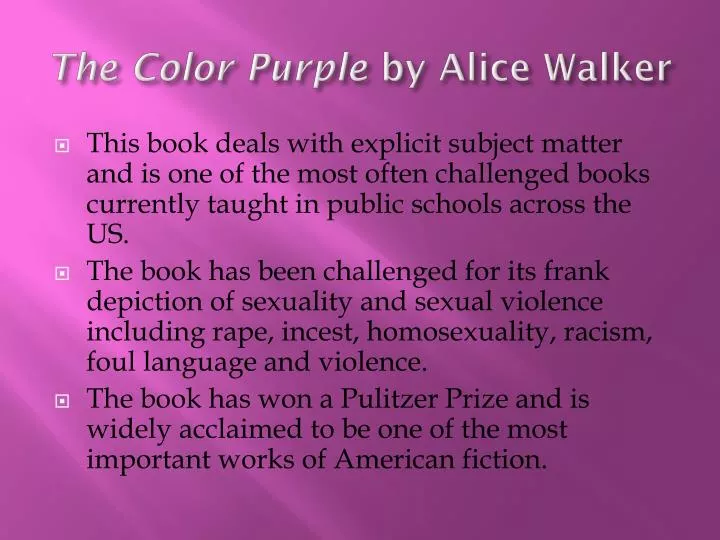

Nettie later escapes Pa and lives with Celie and Mr. _ needs someone to take care of them.Ĭelie marries Mr. _ believes Celie to be ugly, but eventually is convinced to marry her, because he has several children by his previous wife (who was murdered), and Mr. _ marry Celie, since she is older and a hard-worker. But Pa does not permit Nettie to marry Mr. _ because Celie fears her father ( Pa) will soon turn his sexual attentions toward Nettie. Celie encourages Nettie's marriage to Mr.

Celie becomes pregnant twice, and each time her father gives away the children.Ī man named Mr. In her first letters, she details how her father has been sexually abusing her. Just as Celie always possessed the inner strength necessary to allow her strike out on her own and to break free of Mr.'s and Pa's influence, the color purple is found in nature, in flowers especially, yet it seems an impossible joy, something that ought not to be there-and an indicator of God's influence on earth.Celie, a young girl who lives with her abusive father, her sick mother, and her younger sister Nettie, begins writing letters to God. long after her relationship with Shug, saying that men have always reminded her of frogs.

carves for Celie a purple frog, symbolizing a comment Celie made to Mr. When Celie returns to Georgia, after having lived with Shug in a romantic relationship, and having started her own pant-making business, Mr. As Alice Walker writes in a preface to the novel, purple "is always a surprise but is found everywhere in nature." From the beginning, Celie shows that purple is her favorite color-she asks Kate, Mr.'s sister, to buy her clothing and shoes in purple, but they end up being too expensive. The novel, of course, is called The Color Purple, and though the color itself does not appear in many places throughout the text, it is clear that purple is associated with Celie, and with Celie's transformation from a young girl to a mature woman.


 0 kommentar(er)
0 kommentar(er)
